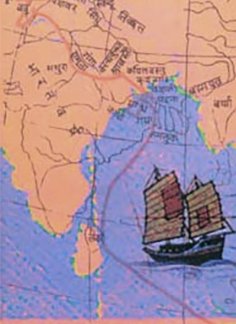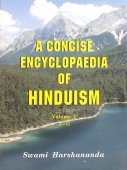Kalahasti, Kālahasti: 2 definitions
Introduction:
Kalahasti means something in the history of ancient India. If you want to know the exact meaning, history, etymology or English translation of this term then check out the descriptions on this page. Add your comment or reference to a book if you want to contribute to this summary article.
India history and geography
Source: archive.org: Chaitanya’s life and teachings (history)Kalahasti is one of the places visited by Chaitanya during his pilgrimage in Southern India between April 1510 and January 1512.—Tri-kal-hasti.—Shri Kalahasti, popularly called Kalahastri, on the right bank of the Suvarnamukhi river, 22 miles n. e. of Tirupati. Famous for its shrine of the Vayu-linga Shiva. (N. Arcot Man. 220-222).
Source: Project Gutenberg: Castes and Tribes of Southern India, Volume 1Kalahasti is one of the exogamous septs (divisions) among the Madigas (the great leather-working caste of the Telugu country). The Madiga people sometimes call themselves Jambavas, and claim to be descended from Jambu or Adi Jambuvadu, who is perhaps the Jambuvan of the Ramayana.

The history of India traces the identification of countries, villages, towns and other regions of India, as well as mythology, zoology, royal dynasties, rulers, tribes, local festivities and traditions and regional languages. Ancient India enjoyed religious freedom and encourages the path of Dharma, a concept common to Buddhism, Hinduism, and Jainism.
See also (Relevant definitions)
Starts with: Kalahastimahatmya, Kalahastipura, Kalahastishaila, Kalahastishavilasa, Kalahastishvara, Kalahastishvarashtaka, Kalahastishvarastotra.
Ends with: Trikalahasti.
Full-text: Kalatti, Dakshinakailasa, Kamakshidasa, Pakanadu, Trikalahasti, Tiru-kalattipuranam, Pottappi.
Relevant text
Search found 14 books and stories containing Kalahasti, Kālahasti; (plurals include: Kalahastis, Kālahastis). You can also click to the full overview containing English textual excerpts. Below are direct links for the most relevant articles:
The Shiva Purana (by J. L. Shastri)
Chapter 10 - Sūta’s instruction < [Section 6 - Kailāsa-saṃhitā]
Later Chola Temples (by S. R. Balasubrahmanyam)
Temples in Kalahasti < [Chapter XII - Temples of Kulottunga III’s Time]
Temples in Tukkachchi < [Chapter IV - Temples of Vikrama Chola’s Time]
Note 2f: Chola Feudatories, the Telugu Cholas < [Chapter XI - Kulottunga III (a.d. 1178 to 1218)]
The history of Andhra country (1000 AD - 1500 AD) (by Yashoda Devi)
Part 6 - Kannara Choda (A.D. 1115-1137) < [Chapter XX - The Telugu Cholas (Chodas)]
Introduction (Bana dynasty) < [Chapter XVI - The Banas]
Part 16 - Vimaladitya (A.D. 1125) < [Chapter XX - The Telugu Cholas (Chodas)]
The Siva Linga: Conceptual, Iconographical and < [January – March, 1996]
Ananda Coomaraswamy and the Tamil < [July – September, 1980]
Reviews < [April 1966]
Early Chola Temples (by S. R. Balasubrahmanyam)
Temples in Tondamanad (34th year) < [Chapter X - Historical Survey]
Temples in Tondaimanad < [Chapter II - Temples of Parantaka I’s Time]
Sanskrit sources of Kerala history (by Suma Parappattoli)
5.1. Ramavarma-vilasam by Balakavi < [Chapter 5 - Sanskrit Dramas and Campus bearing on Kerala History]
Related products
